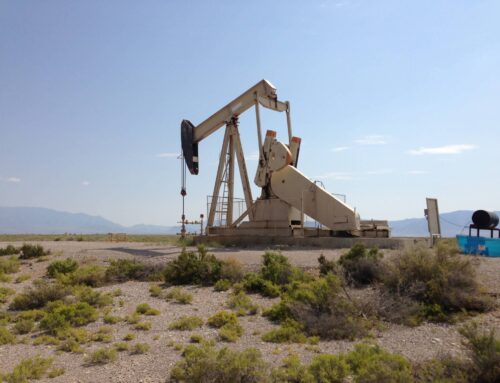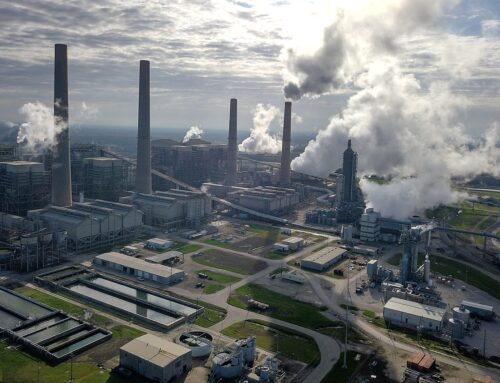View/Download this article in PDF format.
On February 16, 2010, the Department of Energy offered the first conditional nuclear loan guarantee of $8.3 billion to Southern Company and is expected to issue another one soon. Taxpayers should be seriously concerned about loan guarantees to the nuclear industry—proposed reactors have been riddled with cost overruns, delays and significant design problems, all of which can easily lead to taxpayers losing billions of dollars if and when these risky projects default. Even in the heyday of lending on Wall Street, private backers were not interested in investing in new nuclear reactors because of these serious uncertainties. Asking taxpayers to take on this financial risk is fiscally irresponsible.
Background
In June 2008, the Department of Energy (DOE) issued a solicitation for new nuclear reactor projects to apply for $18.5 billion in loan guarantees under its Title XVII Loan Guarantee Program, which was originally authorized by the Energy Policy Act of 2005. The authority to distribute $18.5 billion for new reactors was first granted by the Appropriations Committee for fiscal year 2008, and extended indefinitely in the fiscal year 2009 appropriations process. However, industry requests far surpassed what was appropriated. DOE received 19 applications from 17 electric power companies requesting $122 billion in loan guarantees to cover new reactors projects.
Reports indicated that the final contenders for the first nuclear loan guarantee were: UniStar Nuclear Energy, SCANA Energy, Southern Company, and NRG Energy. , Each of these projects have experienced and continue to face rising cost estimates, delays related to reactor designs, and credit downgrades. Yet on February 16, 2010, the Administration announced the first conditional loan guarantee to build two new reactors at Southern Company’s Vogtle site in Georgia. While a conditional loan guarantee is not a final agreement, this announcement signals federal support for projects that have abysmal financial track records and should raise a red flag for federal taxpayers.
First Loan Guarantee Award
Vogtle Units 3 and 4 in Georgia, Southern Co. and Georgia Power Venture
Southern Company applied to build two 1,117 MW reactors at its Vogtle site in Waynesboro, Georgia, where two reactors are already in operation. Southern Co.’s nuclear division would oversee construction of the two Westinghouse AP1000 reactors and serve as the operator, while Georgia Power (a subsidiary of Southern Co.), Oglethorpe Power Corporation, Municipal Electric Authority of Georgia, and The City of Dalton, Georgia would share ownership, in a similar ownership structure to the one in place for the existing two reactors. , Southern Co. was approved for an Early Site Permit in August 2009 and serves as the reference site for the construction and operating license permit for the AP1000. There is currently no schedule for license approval due to the NRC’s concern that the AP1000 design may not withstand earthquakes and severe weather events, such as hurricanes and tornados. The Georgia Legislature passed controversial legislation in 2009 allowing Georgia Power to charge financing costs to ratepayers during construction of the reactors, rather than over the life of the plant and regardless of whether the reactors are ultimately built, exempting large industrial and large commercial consumers who have access to different rate options than smaller customers, and in response, consumer and environmental organizations have challenged the legislation in state court.
Although the project is already facing setbacks with reactor design approval, DOE offered Southern Co. and its partners a conditional loan guarantee of $8.33 billion ($3.07 billion to Georgia Power, $3.07 billion to Oglethorpe Power and $360 million to the City of Dalton ) to build Vogtle units 3&4 in mid-February. Southern Co. estimates that the loan guarantee will cover no more than 70% of eligible projected costs. This massive loan guarantee means that the federal government will pay for additional capital costs of the project even if there are delays in its execution. Georgia Power’s share of the cost has been estimated at $6.1 billion, with the cost of the entire project expected to total $14 billion. One of the project partners, the Municipal Electric Authority of Georgia or MEAG, plans to pay for $2.48 billion of its share with Build America Bonds and the other $54 million with tax exempt bonds. These bonds issued by the US stimulus plan are similar to municipal bonds, but are taxable . However, MEAG still does not know how it will pay for the remaining $700 million of its share. Southern Co. reported that DOE loan guarantees offer significantly lower interest rates than private sector loans, saving Southern Company an estimated $15-30 million on interest expenses. Southern Co. plans for the first reactor to come online in 2016, with the second in 2017, but the pending lawsuits as well as the design problems could delay the project. Georgia Power originally had 90 days (mid-May) to accept the conditional loan guarantee but requested a 30-day extension.
On June 18, 2010, Southern Co. announced its agreement to accept the DOE loan guarantees. The loan will be funded by the Federal Financing Bank. The final approval and issuance of the loan guarantees is subject to pending regulatory approvals including the Combined Operating License from the NRC.
A recent state court decision could delay the project further and calls into question the project’s financing. The Fulton County Superior Court ruled against the Georgia Public Service Commission (PSC) finding that PSC failed to explain its reasoning in approving Georgia Power’s plan to expand the Vogtle plant and have customers pre-pay for the new reactors. ,
Hearings at the PSC are underway this summer to evaluate Georgia Power’s costs spent thus far on the estimated $14 billion project. Georgia Power still claims that the project is under budget and on schedule. However, Southern Company’s public disclosure versions of the Company’s testimony are more heavily redacted than other utilities pursuing new reactors. For instance, the current costs sunk into the Vogtle project and any scheduling changes are marked trade secret in the docket currently before the PSC. The PSC will make a final decision by August 17 on whether to approve the incurred costs and will decide on a Georgia Power rate case later this year that will address these initial costs among other costs.
Status of Other Top Loan Guarantee Applications
Calvert Cliffs Unit 3 in Maryland, UniStar Nuclear
UniStar Nuclear, a joint undertaking of Constellation Energy and the French government-owned utility Electricité de France (EDF), is planning to build a 1,600 MW reactor at Constellation Energy’s Calvert Cliffs site close to Lusby, Maryland. Plans are to build an Evolutionary Power Reactor (EPR), a design by the French mainly government-owned company Areva. This design is currently being built in Finland, where it is 75% over budget and at least 3.5 years behind schedule, and in France, where it is two years behind schedule and 20% over budget. Even though these reactors are already under construction, Areva is modifying its design at the request of the French, UK and Finnish regulators, who are concerned that the day-to-day and the emergency systems could fail at the same time.
The US Nuclear Regulatory Commission (NRC) is in the early stage of reviewing the design. In May 2009, DOE announced that Calvert Cliffs Unit 3 was in the final phase of due diligence for loan guarantees. The Maryland Public Service Commission approved its application for a Certificate of Public Convenience and Necessity on June 26, 2009. On October 30, 2009, as Constellation was experiencing cash-flow problems, the Commission approved the purchase of 49% of the US utility Constellation by the French utility EDF. The project’s costs have been estimated to be $9.6 billion for the reactor, not including financing. When financing costs are added, it could increase the price by several billion dollars. The same design proposed in Pennsylvania is estimated at $13-15 billion, including financing. Standard & Poor’s Ratings Services recently downgraded Constellation’s credit rating to just above junk bond status, largely because the PSC has forbidden Constellation from relying on its subsidiary, Baltimore Electric and Gas, in the event of cost overruns. Additionally, power demand in the region has significantly decreased due to the market downturn, putting into question the necessity of the new reactors at this point in time.
V.C. Summer Units 2 and 3 in South Carolina, SCE&G and Santee Cooper Joint Project
SCE&G, a subsidiary of SCANA Energy, has applied to build two reactors at the V.C. Summer site near Jenkinsville, South Carolina. One reactor is currently operating at the site. SCE&G, along with the state-owned utility Santee Cooper, plan to build two 1,117 MW Westinghouse AP1000 reactors. According to SCE&G, the first reactor would come online in 2016 and the second in 2019. Earlier estimates put the cost at around $9.8 billion to build these two reactors. However, in May 2009 SCE&G reported that there could be a cost increase of more than $500 million. This could put SCE&G’s portion of the costs at over $6.8 billion, potentially bringing the price of building the reactors up to nearly $11 billion. Costs are likely to continue increasing with the NRC’s recent rejection of the amended AP1000 design. The NRC has not issued a final review schedule for completing the design while Toshiba-Westinghouse addresses these serious issues.
South Texas Project Units 3 and 4 in Texas, NRG Energy and CPS Energy Joint-Undertaking
NRG Energy is planning to build two 1,350 MW reactors at its South Texas Project site near Bay City, Texas. The project was originally proposed to be a joint-venture of NRG Energy, and the City of San Antonio municipal utility CPS Energy to build two GE Advanced Boiling Water Reactors (ABWR). The original cost estimate of the project was $5.4 billion, but costs are now estimated to be nearly $18 billion. The $4 billion cost increase is surrounded by controversy because it was withheld from the San Antonio City Council. Disagreements over the cost increase led to a lawsuit between CPS Energy and NRG, as well as the resignation of the CPS General Manager, amid the investigation into the cost increase. NRG expressed concerns that the fighting with CPS Energy could negatively impact the project’s chances of receiving a loan guarantee, but suggested that DOE move forward because other investors may be interested in the project.
In February 2010, CPS and NRG reached a settlement that includes reducing CPS’ stake in the project from 50% to only 7.625%. The other 92.375% would be held by Nuclear Innovation North America (NINA), a partnership between NRG and Japanese-owned Toshiba Corp. The agreement between NINA and CPS stipulated that NINA will cover future development costs and pay CPS $80 million only if the project receives a loan guarantee. In early May, Tokyo Electric Power Company (Tepco) agreed to buy an 18% stake in the South Texas Project. This would amount in a $155 million investment. Tepco’s transaction would give it a 9.2% interest in the project, bringing down NINA’s investment to 83.1% and CPS’s investment remaining the same at 7.6%. Tepco would also be bringing in staff and providing expertise from engineers in Japan, thus reducing the number of US jobs originally predicted. NRG still needs to find additional partners and find electric suppliers to purchase its output. The reactors will sell output in market prices, not regulated rates. This troubles investors as power demand and prices remain weak in the face of economic decline. Despite the uncertainty in the project’s marketability, DOE is still considering a loan guarantee for the company.
Updates on Additional DOE Loan Guarantee Applicants
The solicitation for DOE nuclear power loan guarantees brought forth a total of 19 applications from 17 companies in efforts to build 22 new reactors. Although DOE did not publicly list these applicants, many companies made announcements stating that they had applied for a loan guarantee. The following is a list of other known applicants.
- Constellation Energy (a UniStar company) proposed a third reactor at Constellation’s Nine Mile Point site in New York. Before it was suspended, the project was estimated to cost $10 billion. (Suspended)
- AmerenUE requested a loan guarantee to build one reactor at the company’s Callaway site in Missouri. Before it was cancelled, the Callaway project was expected to cost $6 billion. (Cancelled)
- Duke Energy applied for a loan guarantee to fund the William States Lee III Nuclear Station in South Carolina. The price tag on these two reactors, excluding financing costs, is estimated at $11 billion, which is twice the amount of Duke Energy’s original estimate. Including financing costs, costs could be $14 billion. In fall 2009, Duke announced a three-year delay in the process, moving expected start-up from 2018 to 2021. (Delayed)
- Exelon Generation requested a loan guarantee to build two new reactors at the Victoria site in Texas. When Exelon decided to suspend the project in summer 2009, the two reactors were expected to cost $16 billion. (Suspended)
- PPL Corp proposed building the Bell Bend power plant in Pennsylvania. The proposal is to build an EPR reactor, which PPL Corp has estimated at $13-15 billion, including financing. The Bell Bend reactor would be built near the company’s existing two-unit Susquehanna site. (Pending)
- Progress Energy applied for funds to build a nuclear reactor at the Greenfield site in Florida. Project costs could exceed $17 billion and would require the largest transmission project in Florida’s history. (Delayed)
- Luminant Power proposed building two new units at the Comanche Peak site in Texas (Units 3 and 4). Luminant has estimated the cost for both reactors will total $15 billion. (Pending)
- Entergy requested a loan guarantee to build the Grand Gulf Nuclear Station in Mississippi (Unit 3). The reactor is expected to cost between $5-8 billion. (Suspended)
- Entergy also proposed the River Bend site in Louisiana (Unit 3). The cost for building one reactor is estimated to range from $5-8 billion. (Suspended)
- Dominion Virginia Power and Old Dominion Electric Cooperative asked for funds to build a new reactor at Dominion’s North Anna site in Virginia (Unit 3). When the project was suspended, the GE Hitachi ESBWR reactor was expected to cost upwards of $10 billion. (Suspended)
For more information, please contact Autumn Hanna at (202) 546-8500 x112 or autumn [at] taxpayer.net.











Get Social